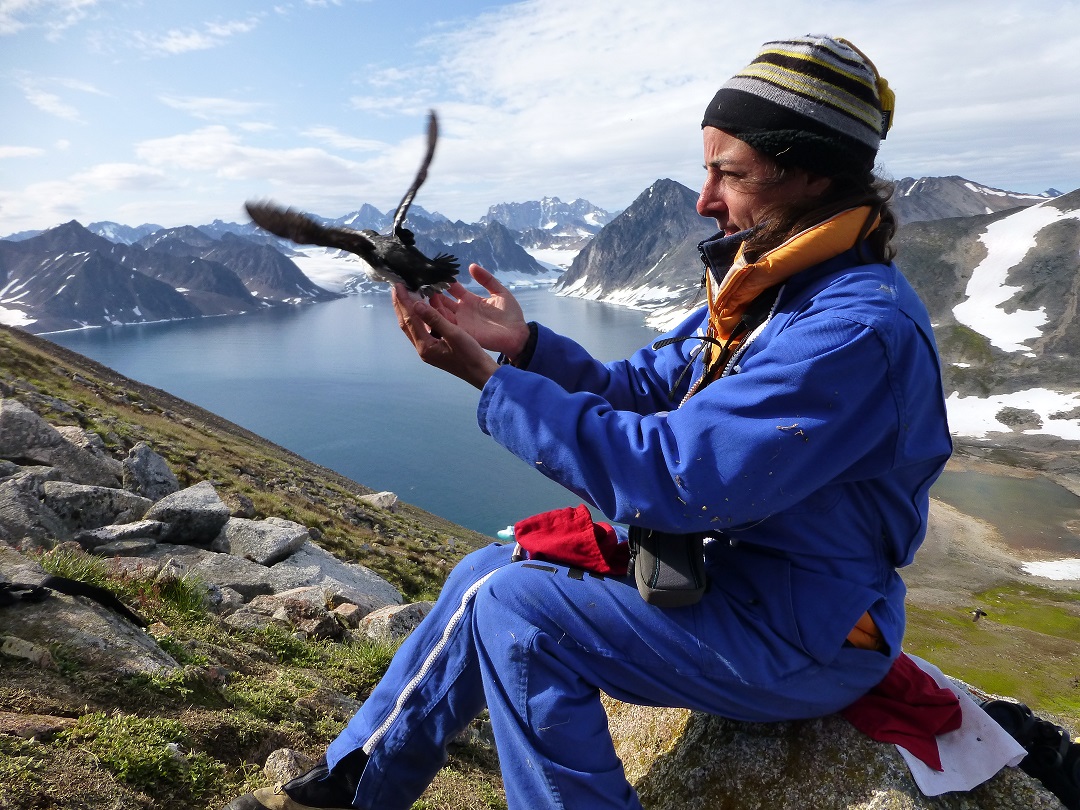 My passion for the Polar Regions started with a dream I had as a teenager but I never thought I would achieve: to overwinter with a small team of people on a remote windswept island in the Southern Ocean or in Antarctica.
My passion for the Polar Regions started with a dream I had as a teenager but I never thought I would achieve: to overwinter with a small team of people on a remote windswept island in the Southern Ocean or in Antarctica.
I eventually had this opportunity some years later, after I studied biology and specialized in seabird ecology during internships for my Master’s degree. I had the great chance to volunteer for 15 months at Ile des Pétrels, East Antarctica, and work on Adélie and Emperor Penguins as part of Yvon Le Maho’s team at the University of Strasbourg, France. I realized how vulnerable penguins and other seabirds are, especially to human-produced pollutants despite the remoteness of major human activities. I grew to understand how global the problem is, and unfortunately, how polar ecosystems are particularly vulnerable. This experience increased my desire to dedicate myself to the preservation of polar ecosystems.
I changed poles for my PhD thesis and I researched the Little Auk, the most abundant seabird in the Atlantic Arctic, with David Grémillet and Jérôme Fort at the University of Montpellier, France. Little Auks breed in the High Arctic and migrate to the North Atlantic during winter. They are often associated with sea ice and feed almost exclusively on zooplankton. I looked at long term changes in their foraging behavior, diet, mercury contamination and fitness during the breeding season, with a 12-year dataset from East Greenland and contrasting sea-ice concentrations in their foraging area. I also studied their wintering strategies according to prey abundance and modeled energy requirements. Lastly, I studied microplastic contamination of Little Auks and their environment in East Greenland.
My main findings showed that foraging behavior and diet of breeding Little Auks are changing with the decline in sea-ice cover. They may benefit from milder climatic conditions in East Greenland, but this effect may be offset by the negative impact of increasing mercury contamination. In winter, they migrate to the seabird wintering hotspot around the Grand Banks, where prey are abundant and energy requirements are moderate. During the breeding season, microplastic filaments were found in all chick diet sampled (mean of 9.6±8.6 pieces per chick meal). Importantly, we found that light-colored microplastics were more abundant in bird diet than in their environment, suggesting active contamination with birds mistaking plastics with their prey. Again, the conclusions of my PhD reminded me how human pollution is already everywhere, even in the poles that are too often considered as pristine areas.
I am now a temporary researcher and assistant lecturer at the University of La Rochelle, France. I study the breeding ecology of the Eurasian curlew, a near threatened wader species, breeding just below the polar circle in Eastern Europe. We equip some birds with GPS trackers during the winter in France to track their migration. I am facing new and different research challenges since I switched to a terrestrial environment, such as the impact of human agricultural practices. On the longer term, I am looking for a postdoc on the responses of top predator to climate changes in polar environments.
I am looking forward to going to ASSW2019 in Arkhangelsk, not only to meet again the wonderful IASC Community and contribute as a Fellow, but also because two of our tracked birds are breeding very close to the town (one of them is breeding between the airport and the town center!) and I hope I can see their habitat.
Get in Contact!
E-mail: francoise.amelineau[at]gmail.com
IASC Fellowship Program
The IASC Fellowship Program is meant to engage Early Career Scientists (ECS) in the work of the IASC Working Groups (WGs). IASC Fellows are doctoral or postdoctoral researchers who actively participate in selected activities of the IASC WGs. The total duration of the IASC Fellowship Program is 1+2 years. After the first year the Fellows have an opportunity to stay involved up to 2 more years; further involvement is individually decided by the WG Steering Group and the Fellow.
The IASC fellowship Program opens for new candidates every year around October and is due mid-November. The call and the selection is held in collaboration with APECS.
For more information click here or contact the IASC Fellowship Coordinator Maja Lisowska.
